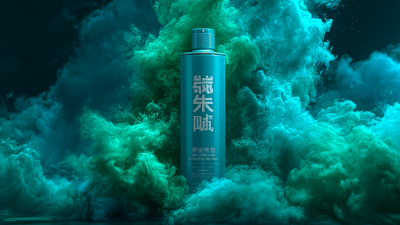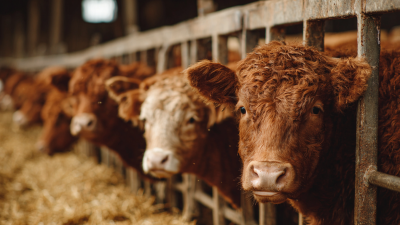In the equine industry, maintaining a clean and hygienic environment in stables is crucial for the health and well-being of the horses. According to a report by the American Association of Equine Practitioners, improper stable sanitation can lead to diseases, with respiratory infections and colic being among the most common ailments affecting horses. Utilizing disinfectant powder for stables is an effective strategy to mitigate these risks, as it targets harmful pathogens often present in equine environments. A study published in the Journal of Equine Veterinary Science highlighted that regular use of disinfectant powders can significantly reduce the presence of bacteria and viruses by up to 90%, thereby promoting a healthier living space for horses. This article will guide you through five essential tips for using disinfectant powder for stables effectively, ensuring your equine companions thrive in a safe and sanitized setting.

Understanding the importance of disinfectant powder in stables is crucial for maintaining a healthy environment for horses and other livestock. Proper sanitation in stables helps prevent the spread of infectious diseases, which can have devastating effects on animal health and overall farm productivity. Disinfectant powders are specifically formulated to eliminate bacteria, viruses, and fungi that thrive in the warm and humid conditions of stables. By incorporating these products into daily cleaning routines, stable owners can significantly reduce the risk of outbreaks and ensure the wellbeing of their animals.
Moreover, the use of disinfectant powder is not only about immediate sanitation but also emphasizes the long-term health benefits for both horses and caretakers. Regular application can help manage common issues such as respiratory infections and hoof problems, which are often exacerbated by unsanitary conditions. Additionally, using disinfectant powder properly can lead to a fresher and more pleasant environment, making it a vital investment for any stable. Understanding how these products work, including their effectiveness and application methods, is essential for achieving the best results and ensuring the safety of the animals.

When choosing the right disinfectant powder for stables, it's crucial to consider the specific needs and type of facility you are managing. Not all disinfectant powders are created equal; some are formulated for specific pathogens or environmental conditions. Look for products that offer broad-spectrum efficacy against common equine pathogens such as bacteria, viruses, and fungi. Additionally, reviewing the label for active ingredients and their corresponding safety profiles will ensure that you select a disinfectant that is safe for both horses and workers.
Another important factor is the application method of the disinfectant powder. Some powders may require dilution or specific mixing procedures to enhance their effectiveness. Ensure that the chosen disinfectant has clear instructions for use to maximize its utility. Furthermore, consider the environmental impact of the disinfectant, as some chemicals may be harmful to surrounding ecosystems. Opting for eco-friendly options not only protects the environment but also aligns with best practices in stable management. By focusing on these key points, you can select a disinfectant powder that delivers effective results for your stable's sanitation needs.
When it comes to maintaining cleanliness in stables, utilizing disinfectant powder effectively is crucial for preventing infectious diseases among animals. Best practices for applying disinfectant powder in animal areas include ensuring that surfaces are first thoroughly cleaned. According to industry recommendations, removing organic matter like dirt and manure is essential, as the efficacy of disinfectants can be significantly reduced in the presence of organic debris. Once surfaces are clean, evenly distribute the disinfectant powder, focusing on high-touch areas and places where animals congregate.
It’s also vital to follow the manufacturer's guidelines regarding application rates and dilution ratios for optimum effectiveness. Studies indicate that certain types of disinfectants may require contact time with surfaces to be effective, which demands planning for drying times before animals are reintroduced to the area. Monitoring the treated environment for effectiveness and reapplying when necessary is also recommended, as this can help uphold a safe and pathogen-free space for animals. Keeping stables clean and disinfected not only promotes the health of the animals but also enhances overall productivity and wellbeing within the farming operation.
When it comes to maintaining a healthy environment in stables, the timing and frequency of disinfectant powder application are crucial for achieving maximum effectiveness. According to a report from the American Association of Equine Practitioners (AAEP), pathogens can survive in equine environments for extended periods, making strategic application essential. Ideally, disinfectant powder should be used after thorough cleaning of stalls and during cooler times of the day—preferably early morning or late afternoon—to minimize the impact of heat on the disinfectant's efficacy.
Industry best practices suggest that disinfectant powder should be applied at least once a week in areas with high animal traffic, such as feeding and resting zones. An independent study conducted by the Animal Health and Veterinary Laboratories Agency (AHVLA) indicated that regular application can reduce the presence of harmful bacteria by up to 90%. Additionally, it's crucial to consider seasonal factors; during wet or humid months, pathogens multiply more rapidly, necessitating increased frequency of application. Thus, aligning the use of disinfectant powder with specific timing and environmental conditions significantly enhances biosecurity in stable management.
| Tip | Description | Recommended Frequency | Best Time to Use |
|---|---|---|---|
| Clean Surfaces First | Ensure all surfaces are cleaned before applying disinfectant powder. | Before each disinfectant application | Morning or Evening |
| Optimal Application | Apply powder in a fine, even layer for best results. | Weekly or Biweekly | After cleaning |
| Ventilation | Ensure the area is well-ventilated during application. | Every application | When weather permits |
| Post-Application Waiting | Let the disinfectant sit for the recommended time after application. | After each application | Per manufacturer's instructions |
| Routine Monitoring | Regularly inspect areas for effectiveness and reapply as needed. | Monthly | During regular cleaning routines |
 When using disinfectant powders in stables, safety precautions are paramount to protect both the animals and the people handling the products. Always wear appropriate PPE, including gloves, masks, and goggles, to prevent skin irritation and inhalation of harmful particles. It is essential to ensure that the area is well-ventilated while applying these powders, as some formulations can release strong fumes that may be detrimental to respiratory health.
When using disinfectant powders in stables, safety precautions are paramount to protect both the animals and the people handling the products. Always wear appropriate PPE, including gloves, masks, and goggles, to prevent skin irritation and inhalation of harmful particles. It is essential to ensure that the area is well-ventilated while applying these powders, as some formulations can release strong fumes that may be detrimental to respiratory health.
Additionally, keep all disinfectant powders out of reach of animals and children. Before application, read the manufacturer’s instructions carefully to understand recommended dosages and the correct method of dispersal. Mixing different disinfectant chemicals can create hazardous reactions; therefore, only use one type of disinfectant at a time. Finally, allow adequate drying time and keep animals away from the treated areas until it is safe to return, ensuring a safe and sanitary environment for all inhabitants of the stable.






